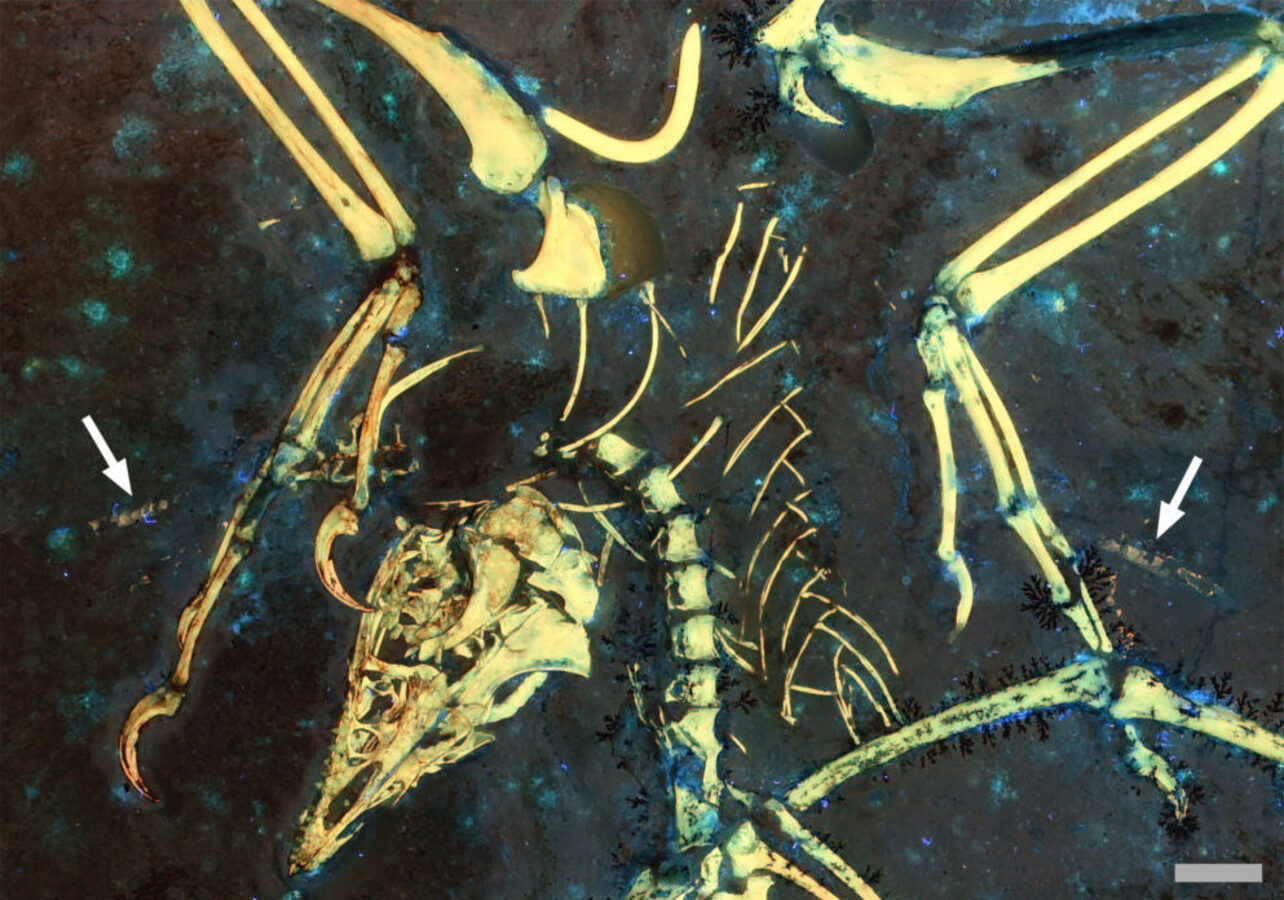A 65-million-year-old detective story
This year Hong Kong plans to host a symposium of paleontological researchers. Over three days, participants in the International Pennaraptoran Dinosaur Symposium to be held at the Chinese University of Hong Kong will examine the classic evolutionary question of how birds evolved the ability to fly.
This will be the second event organised by Dr Michael Pittman, School of Life Sciences, Chinese University of Hong Kong. 20 to 30 delegates have been invited to the event and will travel to Hong Kong from countries including Argentina, Canada, China, Germany and the United States.
The earliest bird fossil was found in 1860, when a solitary feather belonging to Archaeopteryx was uncovered in Jurassic limestone deposits near Solnhofen, Germany. Pittman says, “We have been studying avian flight for about 200 years, but the study of the origin of flight is not straightforward.” To understand the question of evolution of flight more broadly, world experts on the evolution of bat and pterosaur flight have also been invited to the symposium. It is hoped that the participants will be able to develop new collaborations in innovative areas of research.
Goals for the symposium include documenting any existing points of consensus and disagreement, building consensus in new areas of research and reporting discoveries in new areas of research.
Feathers were not initially used for flying and the species that had these early feathers did not have long enough arms for flight. “Feathers have to be a very specific shape to be aerodynamic. And they have to be veined like a feather on a quill. The first feathers were actually more like human hair. They were very, very simple,” says Pittman, “it seems more than likely that these feathers evolved for use as insulation, acting like mammal hair, and as modern display feathers, rather than to enable flight.”

The symposium will explore the evolutionary tree of small, feathered dinosaurs and the biomechanical limits of these species. 65 million years ago, many small dinosaurs were close to achieving flight. Scientists now are exploring possibilities outside of a simple, linear evolutionary model and instead propose a more complex picture of experimentation with wing-assisted locomotion within a spectrum of near-flight to fully-flighted capabilities. For example the potential for powered flight evolved at least three times in theropods, twice in dromaeosaurids and once in birds.
Researchers are keen to understand why these three groups evolved the ability to fly. Pittman believes the key is to research the dromaeosaurids identified as fliers, but which are not birds, and this, in turn, will help us to better understand what it was that made birds become airborne.

Using our current understanding of aerodynamics, researchers know for birds and feathered dinosaurs to fly they must have had a wing loading of less than 2.5 grams for each square centimetre. However over millennia our atmospheric conditions will have changed. Pittman proposes rerunning the calculations using contemporary atmospheric pressure values.
“We are expecting to find that it might have been easier for potential fliers to fly at that time. The atmospheric pressure may have favoured them to be able to glide for longer. If that is the case, it will help our understanding of the evolution of flight,” he says, “the tipping point for the evolution of flight, for it being worthwhile to fly, might not have occurred in today’s environment with today’s atmospheric pressure.”
This will be the first symposium held in Hong Kong to examine the evolution of flight. Pittman says, “It’s like detective work. We don’t have all the pieces of the puzzle.”
The Second International Pennaraptoran Dinosaur Symposium is supported with a grant from the Croucher Foundation.
How pterosaurs became airborne
There will be plenty to discuss and debate at the upcoming symposium for paleontological researchers when they meet in Hong Kong later this year to examine the evolution of flight in dinosaurs. For example, a recent paper authored by the symposium’s organiser Dr Michael Pittman, and his international palaeontology research team, has solved the puzzle of how aurorazhdarchid, a pterosaur with an approximately 40cm wing span, could have overcome the high surface tension of water to launch itself into the air. The team studied laser images that allowed them to analyse the body structure of extinct flying reptile fossils. The images reveal how pterosaurs became airborne from the surface of water using both their feet and wings, just as ducks do. Most living water birds today use a dynamic running launch, but this mode was not possible for pterosaurs because of their low floating position and forward centre of gravity. Pittman believes that the aurorazhdarchid took flight from water about 150 million years ago, during the Jurassic period – 30 million years earlier than previously thought. Pittman says: “The laser-fluorescence imaging technology provides a high-res look at the pterosaur’s body structure. The team used these data to perform aerodynamic modelling showing that this pterosaur was capable of using its wings and feet to perform a ‘quadrupedal water launch’, similar to how ducks fly. [We can imagine it was] regularly feeding from, and even plunging into, oceans, lakes and rivers as birds do today.” The research was reported in Scientific Reports.